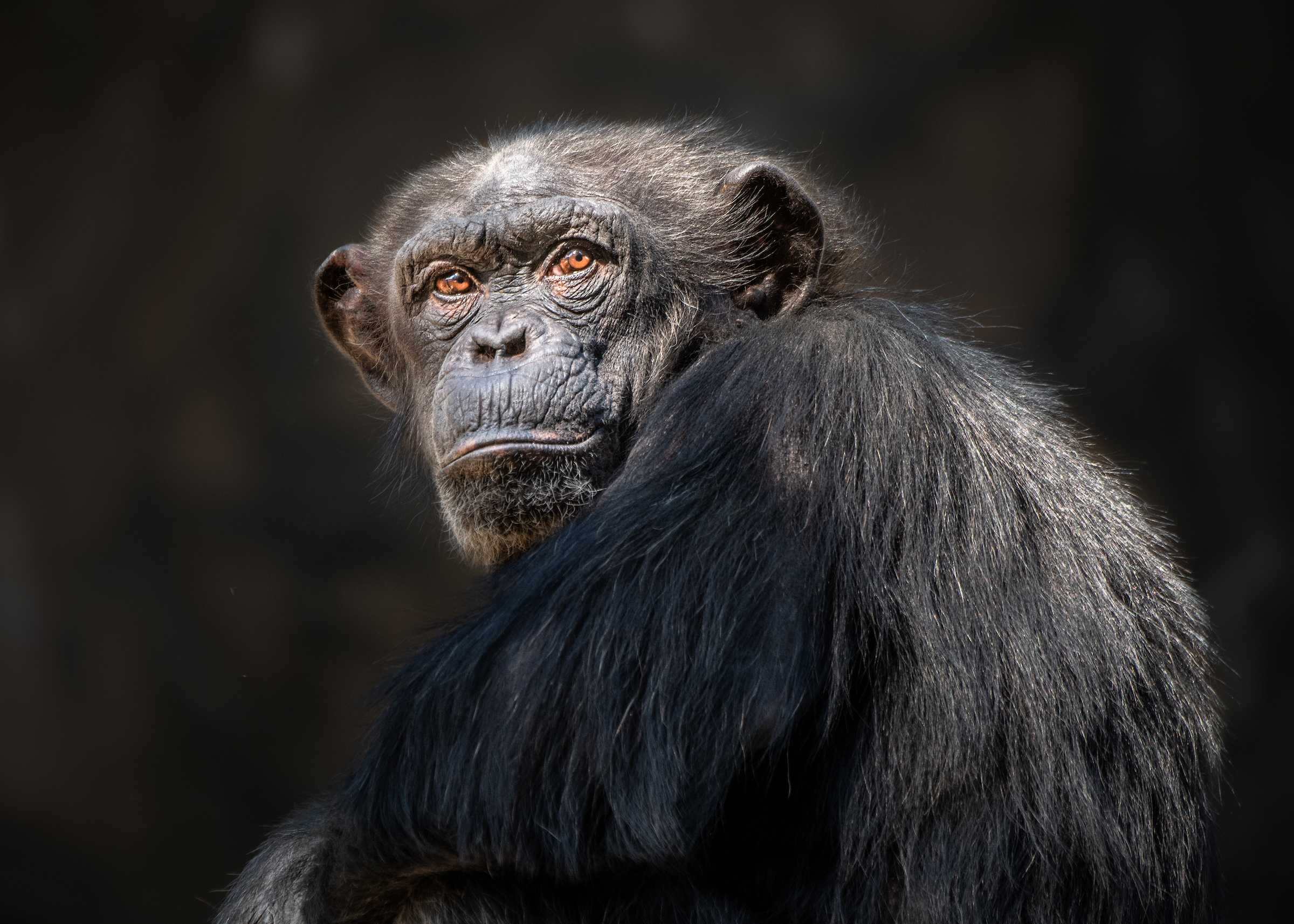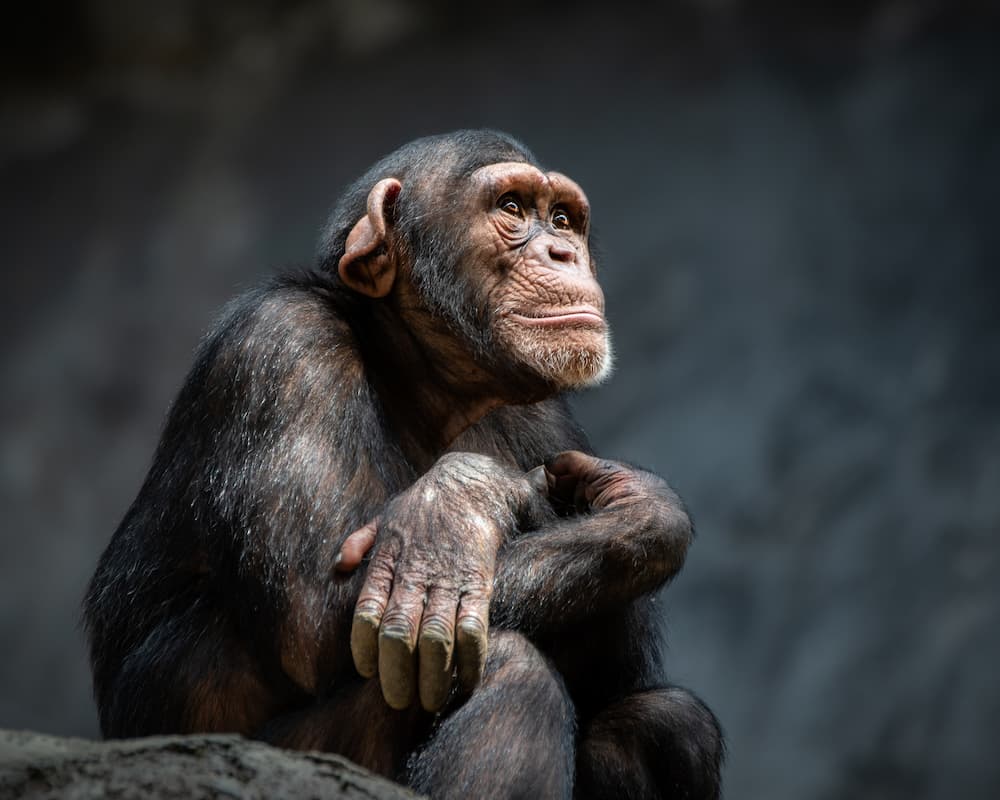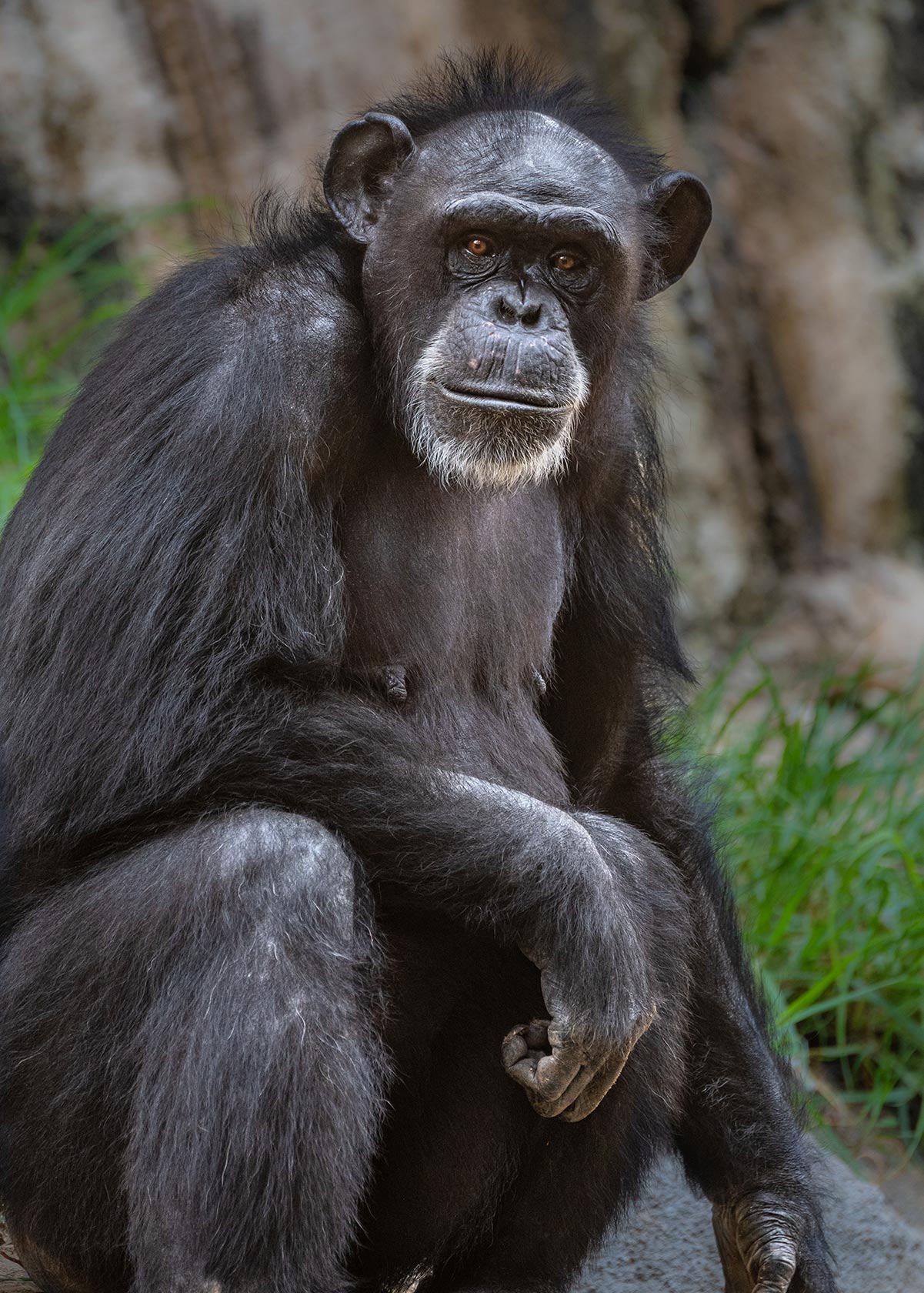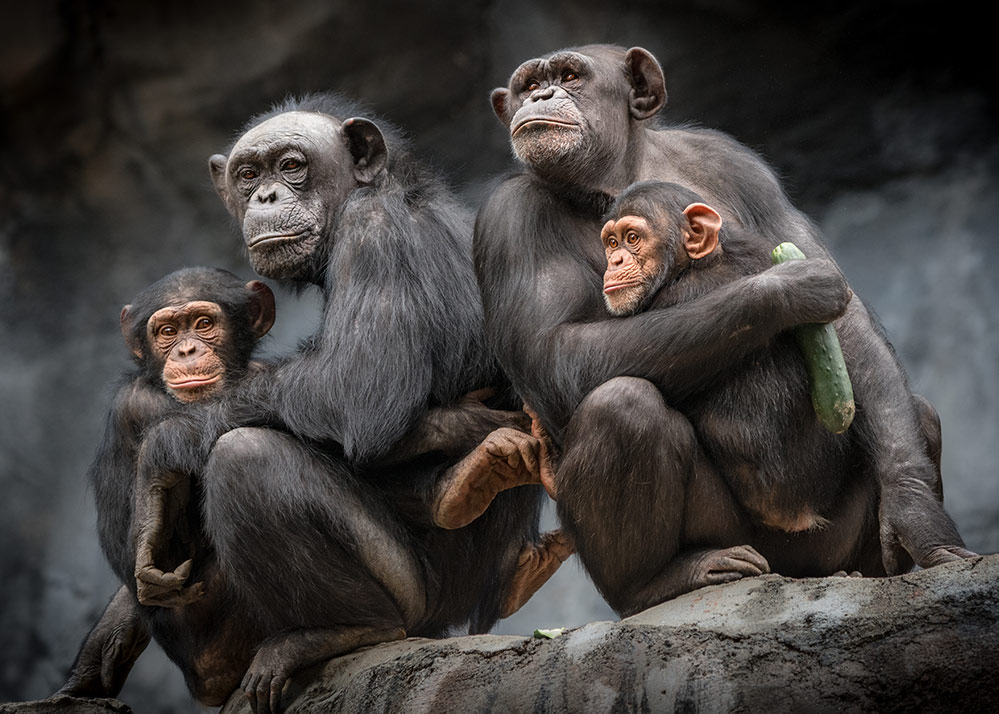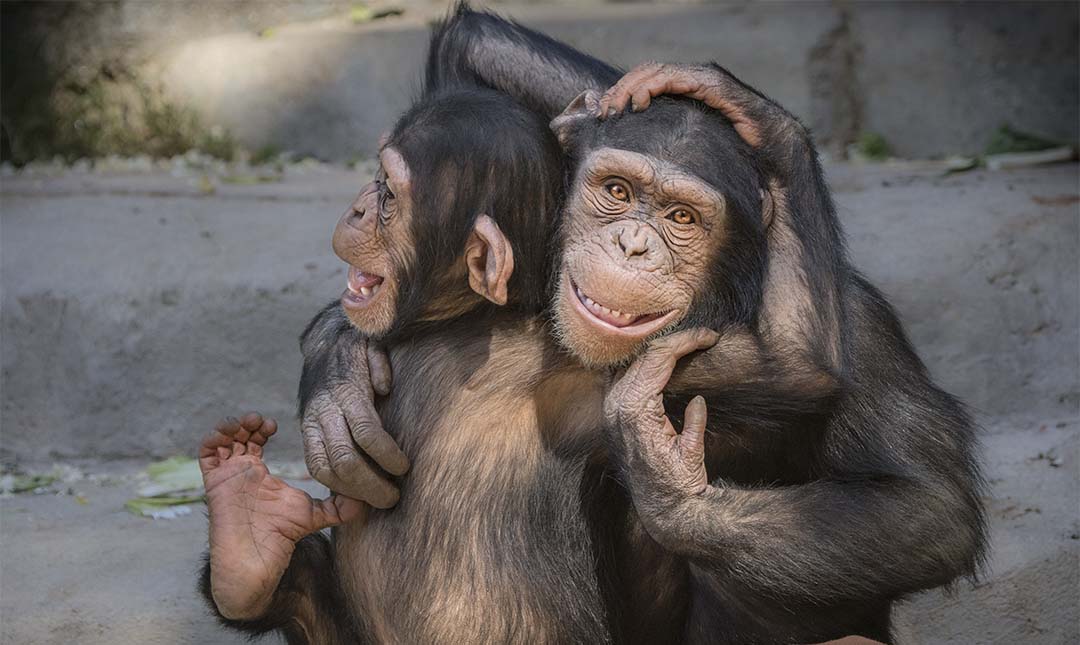About
Along with gorillas, orangutans, and bonobos, chimpanzees are great apes. They are our closest relatives, sharing 98.6 percent of our DNA. Among the many demonstrations of their intelligence, they create tools, using rocks to smash open nuts and gourds; sticks to fish ants, bees, and termites out of their nests; tree branches as weapons; and leaves to soak up water to drink. Tools are primarily used to obtain food, but they are also used as weapons and in games such as tug of war or catch. Tool use is not instinctive, but rather learned through observation. Different troops pass along different tool-making techniques. Some sharpen sticks like spears to hunt. Others split the ends of sticks to increase the catch of insects per dip. Chimps, like humans, communicate using a wide variety of facial expressions, gestures, and vocalizations.
Chimps live and travel in troops of 30 to 80 individuals led by a dominant male. Challenges to the dominant male are common and the group leader typically changes every 3 to 5 years. Chimps live in a “fission-fusion” society, breaking into smaller temporary subgroups (fission) during the day. Smaller groups have a better opportunity to find sufficient food. In the evening, they reunite (fusion) to build nests and sleep. Larger groups offer better protection against predators. At the Zoo, chimps practice their own fission-fusion breaking into subgroups during the day to either lounge in the penthouse or head out into the main habitat to enjoy the waterfall. They reunite at night in their sleeping quarters. Chimp populations are decreasing due to poaching, habitat loss and degradation, and disease. Although all killing and capture of chimpanzees is illegal, laws are difficult to enforce.




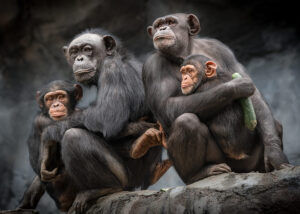

Status
Populations have decreased because of illegal logging, hunting, commercial exportation, and collection for scientific research. Although chimpanzees are protected in 34 national parks and reserves, laws can be difficult to enforce in remote regions.
Habitat
These apes live in forests and grasslands in east, central, and west Africa ranging from Senegal to Tanzania.
Diet
Omnivores, chimps prefer fruit augmented by leaves, flowers, insects, reptiles, and birds. Chimps are excellent hunters and will go out in “hunting parties,” with the meat from monkeys and other small mammals used as currency to gain allies and access to breeding females.
Physical Characteristics
Height ranges from 3.5 to 5 feet. Weight ranges from 70 to 120 pounds. Chimps in human care can and do grow larger. Males are up to 20 percent larger than females. Lifespan in human care is 50 to 60 years.
LOCATION WITHIN THE ZOO
The Chimpanzees of the Mahale Mountains habitat is in the Africa section. See Zoo Map.

